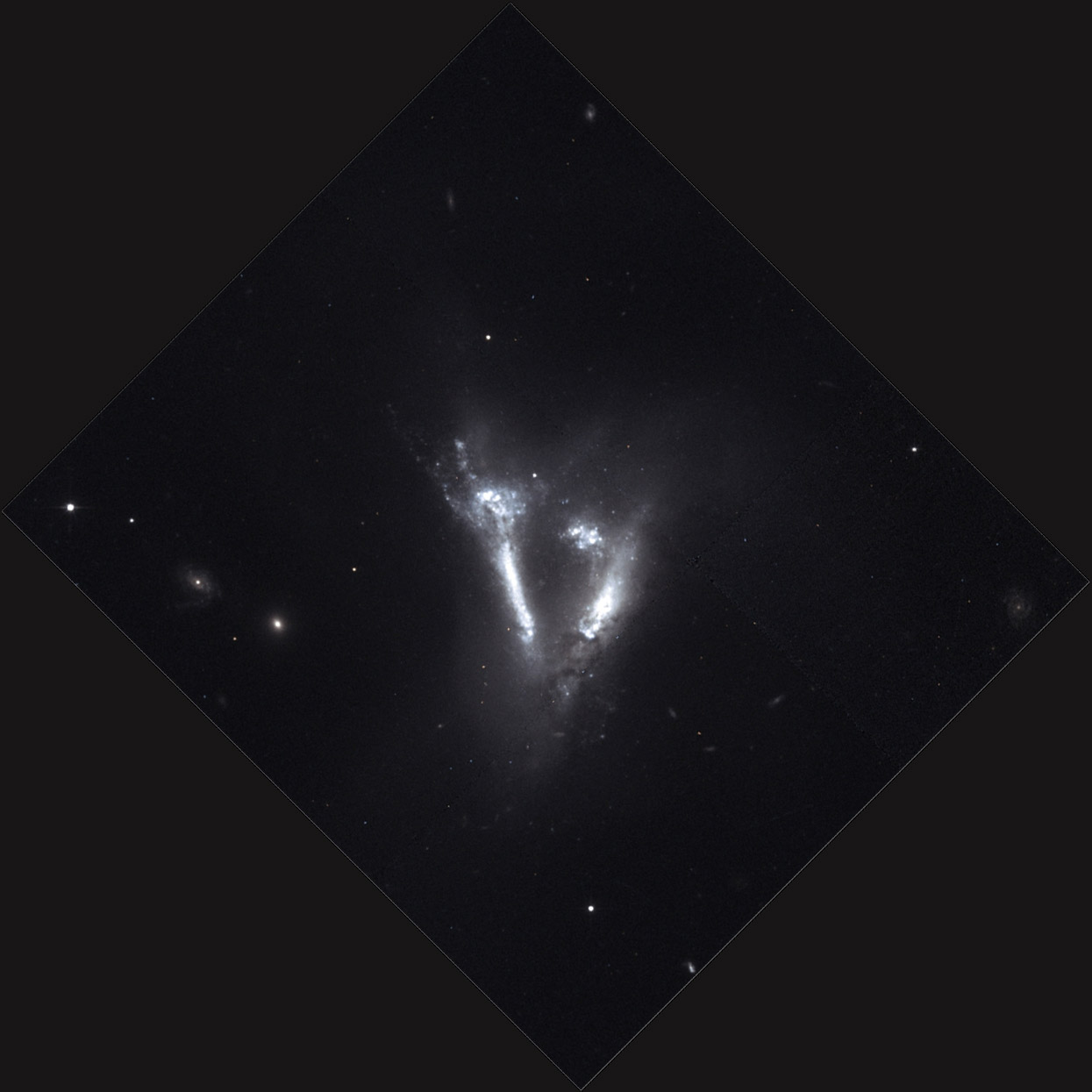| Description | Images |
Object name: IC2184Designation(s): IC2184, Markarian 8/IC 2184 is a pair of colliding galaxies in Camelopardalis about 160 million light-years distant. It may look like it consists of 3 or 4 galaxies, but this is due to my lack of resolution. The Hubble space telescope has looked at this one. I did a quick and dirty process of a mono image I found at the Hubble Legacy site rotated to closely match my image's orientation. It shows it is just two interacting galaxies in which the interaction has created several bright star clouds in the debris field of the collision. It appears the action is just beginning with the major wreck still well into the future. The CGCG says of it "Triple system in halo." While the CGPG says: "Blue post-eruptive quadruple of 2 bar-shaped and 2 spherical compacts." So I don't feel bad that it does appear to be 3 or 4 objects in my image. Those authors apparently had little better resolution than I do to work with. Markarian seems to have the most accurate description: "Two tightly merged double galaxies. Seems to be a nest of blue objects." He seems to realize it is only 2 galaxies though doesn't seem to desire to speculate what the rest of the blue objects are in that nest. NED classifies both as S? Related Designation(s):CGCG 0723.6+7214, CGCG 330-039, CGPG 0723.6+7214, IC 2184, IC2184, IRAS 07236+7213, IRAS F07236+7213, KPG 135, MCG +12-07-041, MRK 0008, PGC 021123, UGC 03852, UZC J072925.4+720744, VII Zw 156, VV 644, [TCW2007] 040, |

